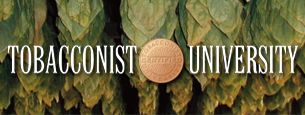Friday, July 10, 2009
History: Final Exam Review
By the time Europeans arrived in America they found the indigenous peoples had been fermenting tobacco and using añejamiento (aging) techniques for thousands of years.
John Rolfe was the first N. American settler to cultivate tobacco commercially in Jamestown, VA, in 1612.
Since the discovery of tobacco in the “new world”, punishment for tobacco use has included taxation, imprisonment, spiritual condemnation, and physical mutilation.
In 1676, the “cigar” as we know it today, wrapper, binder, and filler, was ‘invented’ in Sevilla, Spain. At that time Spain only allowed agricultural production in Cuba, not manufacturing.
The 1700s were characterized by the spreading of tobacco factories throughout Europe.
During the 1800s, the invention of cigar bands and labels helped distinguish what seemed like generic products. In the process, cigar makers pioneered brand identity, point of purchase and affective marketing. The introduction of lithography helped cigar makers create cigar bands and labels that were (and are) extraordinary works of art. Ironically, the quality and attractiveness of cigar bands/labels have little or nothing to do with the quality of the cigars they adorn.
In America, around 1905, there were over 70,000 registered cigar factories and 7 out of 10 men smoked cigars.
By the 1920s, the decline of the cigar industry was precipitated by the cigar rolling machine, financial crash of 1929, and mass production of cigarettes.
The ‘Cuban Revolution’ of 1959 instigated a mass exodus of Cuban cigar makers to the Dominican Republic, Central America, Canary Islands, and the United States of America.
Subscribe to:
Post Comments
(
Atom
)








No comments :
Post a Comment